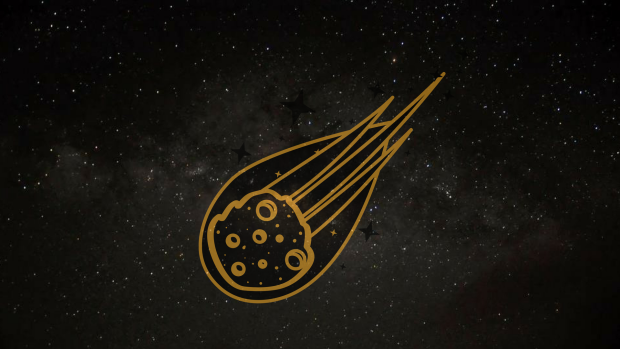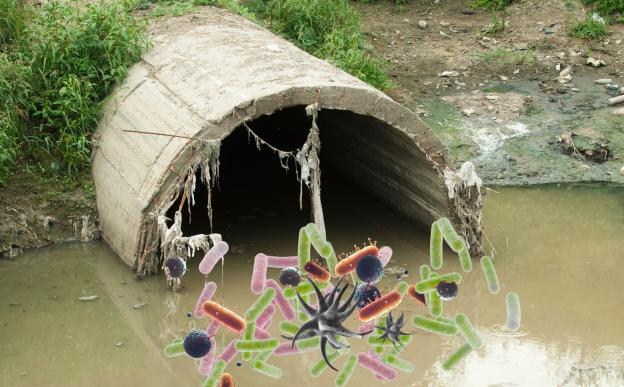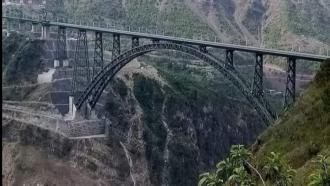
Illustration: Research Matters
About 66 million years ago, a bit of space rock 12 km in diameter travelling at 60 thousand kilometres per hour fell on the Yucatan Peninsula in Mexico. It vaporized everything that came in its way and formed a crater 100 km across and 30 km deep. The impact was so strong that it created mega tsunamis, ignited global fires, and blanketed the entire Earth in a thick layer of dust for centuries, blocking the sunlight and affecting photosynthesis. This triggered a chain of catastrophic events, like heat and cold waves, acid rains etc, ultimately resulting in the extinction of around 70% of the species on earth including the large reptiles that live on in our collective imagination, the dinosaurs.
That notorious ‘bit of space rock’ was an asteroid - irregularly shaped rocks that revolve around the Sun, but are too small to qualify as Planets. Most asteroids are found in the asteroid belt, a 150 million km thick disk between the orbits of Mars and Jupiter. However, some asteroids rotate in ‘skewed’ orbits that bring them close to the earth, posing a danger of collision.
Asteroids with diameters less than 4 meters hit the earth once every year. They enter earth’s atmosphere flying at a speed of Mach 50, or 50 times the speed of sound, and carry energy equivalent to ‘Little Boy’, the atomic bomb dropped on Hiroshima. While entering earth atmosphere they break into smaller pieces called meteorites.
Two such events have been recorded in recent past. One day in 1908, an imminent calamity due to an asteroid was averted due to pure chance. A 150 m wide asteroid crashed near Tunguska River in Siberia, depleting 2000 square km of forest. Thankfully, the asteroid exploded above a forest and not over a populated metropolis like Mumbai or London.
A more recent impact was in 2013, when a 20 m wide asteroid -- that’s nearly twice the size of a school bus -- entered the atmosphere, travelling at Mach 55 at Chelyabinsk, Russia. The flame was so bright that broad daylight appeared faint. The asteroid exploded about 20 km above ground, creating shock waves and blowing windows of 7,200 buildings that injured 1,500 people across six cities. Fortunately, there were no fatalities.
The Russian government is said to have known about the impact through the social media platform, Twitter. Later, Space agencies took such threats seriously and joined hands to coordinate and keep track of potentially hazardous asteroids. The Planetary Defense Coordination Office was set up by NASA, whose task was to find, track and characterize potentially hazardous asteroids.
“There is evidence that Earth took heavier blows in prehistoric times. Around 150 craters formed by asteroid collision have been discovered on earth”, says Prof Narendra Bhandari of Physical Research Laboratory (PRL), Ahmadabad. Prof Bhandari has five decades of experience of studying meteorites and craters. He is a fellow of Indian Academy of Sciences and has been facilitated Outstanding Achievement Award of ISRO for conceptualizing Chandrayaan, the Indian mission to the Moon.
In India, two craters have been discovered, one at Lonar, Maharashtra and other at Dhala at Shivpuri, Madhya Pradesh. Prof Bhandari explains, “The lonar crater is very young. We have dated it to be 46 thousand years old while Dhala may be millions of years old”. Prof Bhandari and his team at PRL extensively studied Lonar back in 1984, “Originally a near flat deccan plateau was once hit by an asteroid about 100 meters in diameter travelling at a velocity of 18 km per second somewhere in present Buldhana district of Maharashtra. Heat generated by the collision was so intense that it instantly created a molten pool of rock which together with material that hadn’t melted was thrown out by the rebound and fell outside the crater forming the 25 meter high rim of Lonar crater. The crater is 150 meter deep and is now turned into a shallow lake with water draining in from the crater walls.” he adds.
In 2015, Grigorij Richters directed a science fiction film titled, 51 Degree North, based on the asteroid impact on London. The music for the film was composed by Dr Brian May, an astrophysicist and guitarist of the English rock band, Queen. The film was later screened at Starmus, an International Astronomy Festival at Norway, in 2015. The festival was attended by Prof. Stephen Hawking, Prof. Richard Dawkins, emeritus professor at the University of Oxford, Dr Brian May and Danica Remy of B612, an American organization created to protect the world from dangerous asteroids. It is at this gathering where the idea of International Asteroid Day was born. Later, United Nations earmarked June 30, the anniversary of the Tunguska event, as Asteroid Day worldwide to raise awareness about asteroids among the public.
The Asteroid Belt
Asteroids come in various sizes. The small ones are less than 10 meters in diameter, while the largest asteroid, Ceres, is 950 km in diameter. Ceres was the first asteroid to be discovered by Giuseppe Piazzi, an Italian astronomer, in 1801. It is mainly composed of rock and ice, and amounts to one-third of the mass of the entire asteroid belt. Ceres is the only object in the asteroid belt known to attain spherical shape by its own gravity, a condition known as ‘hydrostatic equilibrium’; hence it has also been classified as a dwarf planet. Vesta is the second largest body in the asteroid belt after the Ceres, and contributes an estimated one-tenth of the mass of the asteroid belt. It has the distinction of being the brightest asteroid visible from Earth.
There are two equally compelling theories to explain the formation of asteroid belt. One explains that when the solar system was young and still forming, a planet tried to form between Mars and Jupiter. However, the strong gravitational pull from Jupiter prevented the materials from fusing together, resulting in scattered boulders of varying sizes revolving around the sun. The other theory argues that asteroids are the remnants of a planet destroyed by collision with a comet during early days of solar system formation.
NASA’s space probe, Dawn
Apart from the safety point of view, the other benefit of studying asteroids is that they are pristine time capsules, hiding in them the information about the early Solar system. Studying their composition can unravel answers to the fundamental questions about the formation of the solar system, and origin of life on earth (or possibly elsewhere). Space agencies around the globe have been sending probes to analyze the asteroids either in situ, or bring back their samples to earth. The famous probes are Near Earth Asteroid Rendezvous (NEAR) in 1996, Deepspace in 1998, Stardust in 1999, Hayabusa in 2002, Rosetta in 2004, and the latest being Dawn, launched in 2007.
Dawn is the first space probe to use a special kind of engine called the ion propulsion engine, which makes it capable of orbiting multiple celestial objects (Ceres and Vesta in this case) one after another. After travelling for four years in space, Dawn entered Vesta's orbit on July 16, 2011, and orbited it for fourteen months then left for Ceres in late 2012, entering Ceres’ orbit on March 6, 2015; it has been orbiting Ceres till date.
Images from Dawn confirmed that Ceres has a cratered surface, and several unique bright spots. These are speculated to be ice volcanoes, hinting at the presence of subsurface water on Ceres. The largest of these volcanoes is called Ahuna Mons, named after the harvest festival Ahuna of the Sumi Naga tribe of Nagaland. The volcano's base is 20 km in diameter and has a maximum height of 5 km.
Conclusion
“Every year several millions of kilograms of material of varied size range from sub millimeter to meters, fall from space. These extra-ordinary celestial rocks provide clues to the understanding of heavenly bodies. They provide invaluable information about the origin of solar system, origin of life, evolution of Earth and Planets and destruction of earlier forms of life”, signs off Prof Bhandari.
























